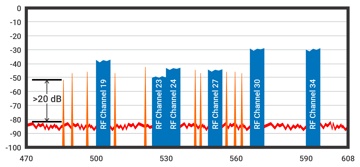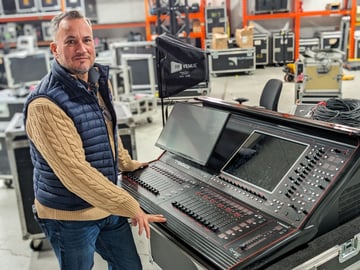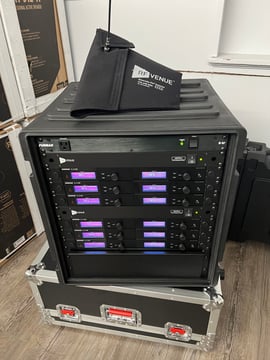- Products
- All Products
- RF PA Extension Kit
- Wireless Microphone Upgrade Packs
- In-Ear Monitor Upgrade Packs
- Wireless Microphone Antennas
- Wireless In-Ear Monitor Antennas
- Antenna Distribution for Microphones
- Antenna Combiners for In-Ear Monitors
- Multi-Zone Antenna Combiners
- Spectrum Tools
- Accessories, Cables and Parts
- Solutions by Venue
- Resources & Training
- Performance Tools
- About Us
RF Venue Blog
.jpg?length=360&name=RF%20Venue%20RFOF%20Example%20Drawing(2).jpg)
Optix Series 3
RFOF and Multi-zone Applications
4 min read
| February 5, 2025
Read More

Press Release
RF Venue to offer training sessions, new gear at ISE 2025
3 min read
| January 29, 2025
Read More

Press Release
RF Venue’s versatile new CP Stage antenna takes the stage in Mexico
7 min read
| January 23, 2025
Read More

CP Stage Antenna
RF Venue debuts rugged, portable, CP Stage antenna
4 min read
| January 10, 2025
Read More

RF Noise, Signal, and Dynamic Range
3 min read
| January 8, 2025
Read More

Press Release
RF Venue appoints Ahren Hartman as Chief Technology Officer
2 min read
| December 17, 2024
Read More

Live Sound
Troubleshooting RF Dropouts
8 min read
| December 10, 2024
Read More

COMBINE4 Transmitter Combiner
PSI Audio thrives 25 years after humble beginnings, relying on RF Venue solutions to support top-tier live events
7 min read
| November 21, 2024
Read More

CP Beam Antenna
Production sound mixer Mark LeBlanc relies on antennas from RF Venue for on-set sound capture
8 min read
| November 12, 2024
Read More

Frequency Coordination
Why Do We Use Scans from Spectrum Analyzers and How Do We Interpret Them?
7 min read
| November 4, 2024
Read More

Knowledge Guides
RF Venue wireless audio essentials deliver invisible performance at The Jacquelyn
8 min read
| October 23, 2024
Read More

DISTRO4 - With Cascade
Embark A/V/L standardizes on RF Venue wireless audio essentials
6 min read
| October 3, 2024
Read More
Subscribe to email updates
Stay up-to-date on what's happening at this blog and get additional content about the benefits of subscribing.
